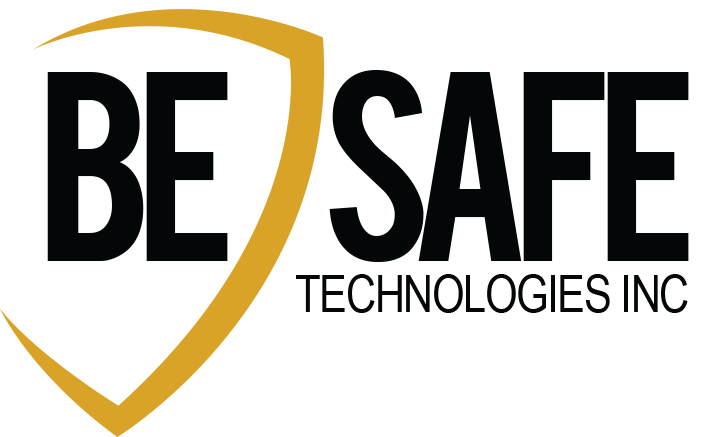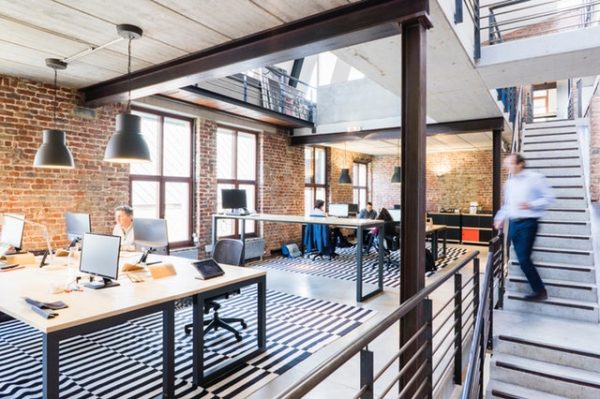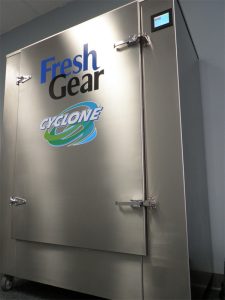Business owners have long known the value of good office security systems.
From the neighborhood pharmacy to the mid-size law office and everything in between, office security systems are known to ward off people with bad intentions.
However, security systems can do more than scare off a burglar should someone try to break-in after hours. Modern security systems can help businesses keep an eye on their business while they’re away, and prepare for environmental threats.
Not only can office security systems keep building occupants safe, but they can provide more control over operations and therefore boost the company’s bottom line.
But not all systems are created equal. Pick the right one, and witness the improvement to security and business operations. Pick the wrong one, and businesses can end up overpaying for an inefficient system.
Today’s article will examine what security systems are out there and how to choose the best one for your business.
But first…
What Makes A Good Office Security System?
At its most basic, a security system functions to detect threats and alert security, management, and emergency services. A good system should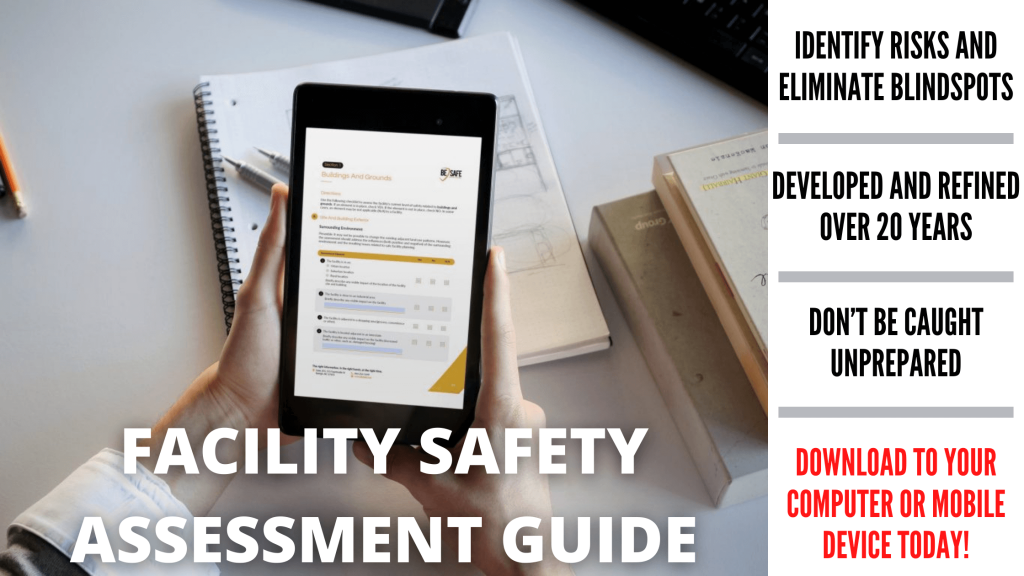 activate if anyone tries to break in or if anything else is going wrong with the building. The rest of the time, it should be easy and convenient to manage.
activate if anyone tries to break in or if anything else is going wrong with the building. The rest of the time, it should be easy and convenient to manage.
Here is a look at the fundamental parts of a security system.
1. Secure the Building with Sensors
In order to make sure that the security system will detect and alert you if something unsavory is happening (like a break-in, flood, or power outage), the building must be equipped with sensors.
Basic Sensors
Sensors can include a vast number of different types of devices that detect all kinds of different things. Here are a few of the most common types of sensors:
- Door Contacts: A contact is composed of two magnets, one that goes on the door (or window) and one that stays on the frame. When the magnets are separated, the device is tripped. Door and window contacts are essential for securing the perimeter of the building.
- Motion Sensor: A motion sensor works by sending a laser beam into a common hallway. If someone is moving around inside the building, the motion sensor will be tripped. Motion sensors can also capture and record images when they are tripped, as long as they are equipped with imaging capabilities. These are sometimes called image sensors.
- Vibration Sensor: A vibration sensor can be used instead of a motion sensor to detect movement within a building. It works by picking up on vibrations that are produced from movement.
In order to make sure the building is secure, at a minimum, the perimeter of the building needs to be equipped with sensors. Usually, that means using door contacts on every door or making sure there is a motion sensor in the absence of a door contact.
Each Sensor Represents A Zone
Each sensor is understood to represent a different “zone” by the security system. Most security systems are activated when more than 1 zone is triggered. In other words, more than 1 sensor must be activated in order for the system to know that there is a problem.
In the case of a robbery or break-in, 1 sensor would be tripped when they breach the perimeter of the building (such as opening the door or window), and another sensor would be tripped as they move around the inside of the building (tripping the motion sensor).
This 2-zone system helps prevent false alarms. The last thing you want is a security system constantly crying wolf.
Advanced Sensors for Advanced Security
However, there are other situations in which the system would be alerted by just one zone being tripped. This usually involves more sophisticated sensors that go above and beyond the basic security package:
- Glass Break Sensor: A glass break sensor is useful to protect an area that is vulnerable because there is a large sheet of glass, such as a glass door or window. If someone breaks through the glass instead of moving the contact off its frame, a glass break sensor will be triggered.
- Freeze Sensor: A freeze sensor can alert the business owner when there is frozen water in the pipes.
- Light Sensor: Light sensors can detect changes in light or power supply.
- Temperature/humidity sensor: These sensors are often used in freezers to detect and alert whenever there is a sudden drop in temperature. They can be used to signal temperature changes.
- Water sensor: A water sensor can alert the business owner and/or authorities in case of a flood or pipe leak.
- Occupancy sensor: Occupancy sensors detect the presence of a person in the building and are used to regulate lighting, ventilation, temperature or other functions automatically.
- Smoke detector: A smoke detector is used as a proxy to detect fires. It can be connected to the security system to get help immediately in case of a fire.
- CO detector: A carbon monoxide detector detects an increase in carbon monoxide in the building. This can be connected to the security system to trip the alarm if CO is detected.
Each of these types of sensors has a specialty function and may not be necessary for every office.
What are the differences between systems?
Security systems vary only slightly in regards to the equipment they offer. Like every product, some equipment is more sensitive or advanced, and some are not as sophisticated.
One of the major differences among security companies’ equipment is that some are wired and some are wireless. If it is wired, the installation process can be a big headache. It will be necessary to drill into the walls in order to run wires all through the office.
Wireless equipment is more convenient to install but can be more vulnerable to interception if it is connected to WiFi. The differences between the type of equipment offered by each company are outlined in the second half of the article.
2. Bring the Sensors to Life: Arming, Disarming, and Communication
With all those sensors in place, there needs to be something monitoring what is going on.
Control Panel
The sensors can only detect what is happening if they are told to be on the lookout. This requires a place to centralize all the information, which is what a control panel does.
The control panel is what connects all the devices. This is the main point of communication between the physical equipment and the computer system.
Going into the control panel is all the information about the status of the sensors. Then, the user needs to provide the information to the control panel about whether to arm the system.
Keypad and/or Mobile App
During times where no one is around the office, the system needs to be armed. This tells the system that if any activity is detected on the sensors, something bad is happening. However, when its time to use the office again, the system needs to be disarmed.
Many modern developments have made it possible to arm and disarm the system from a mobile app or key fob, however, the classic way of arming and disarming the system is with a keypad.
Panic Button
Additionally, some offices might need a panic button. Panic buttons are buttons to push in case of an emergency. They are useful in offices, schools, hospitals, gas stations and anywhere else where people may be worried that someone could walk in with bad intentions. The panic button immediately dispatches the authorities and trips the alarm.
3. What Happens When the Alarm Goes Off?
With the basic pieces outlined above, the security system will be tripped if something unwanted happens that trips a sensor. The devices will tell the control panel to sound the alarm, and the result will be a loud scary noise.
What happens next is another major point where systems differ. If ever something bad happens, who should the system notify?
Monitoring Center
If a business chooses to have their security system monitored, it means that when the alarm goes off, the security company is notified. The security company can then act on behalf of the business owner to dispatch the appropriate authorities and contact the required people.
In order to avoid the occurrence of false alarms, there is a time buffer between when the sensor gets tripped when the alarm goes off, and then the company is contacted. The only exception is when the panic button is pushed, then the alarm is tripped right away, and the appropriate authorities are called.
Finally, monitoring can be done as regular monitoring, as described above, or video monitoring, where images are used to determine the nature of the emergency.
Self-Monitored or Unmonitored
Of course, one can choose to monitor their own office instead. In this case, once the alarm goes off, the alarm system would contact the business owner directly. Depending on the type of system, it can text, call, email, or alert the business owner about the tripped alarm, and can include a level of detail consistent with the equipment choices and quality.
It would be up to the business owner to investigate the alarm themselves, and if necessary, call the authorities.
One of the major advantages of self-monitored systems is that they do not require a monthly monitoring fee. However, one of the drawbacks is that the system is less safe than it would be if the authorities were automatically contacted.
4. Elevating the Office: Security System Integrations
In addition to detecting a breach in the perimeter, a fire, a temperature change, or any other security risk to the building, there are plenty of other interesting integrations that can be set up to offer additional functionality. Depending on what a person wants and how much they want to spend, they can have a fully functioning smart-office hooked into their alarm system.
- Security cameras: Indoor, outdoor, motion-triggered, infrared, and more are all options. Cameras can work symbiotically in the security system to help illuminate what is going on with a building.
- Door locks: Check-in on employees while the owner is not around with smart locks by checking when doors are opened in the morning. Plus, business owners can make sure the office is closed for the night without driving into the office by using the remote lock and unlock feature in the app.
- Mobile App: Mobile apps allow remote access to many features of a smart office, and allow business owners minute-by-minute updates on the operation of the business.
- 3rd party devices: Thermostats, lights, and more can all be remotely controlled and integrated into the security system. Security system providers offer smart-office integrations to automate many functions of the office.
- Video doorbell: a video doorbell allows people inside the office to see who is outside the office as they ring the bell.
- Cloud storage: video camera footage, as well as data from all devices, is stored remotely in the cloud, hosted by security companies.
Integrations like these make endless combinations of functions possible, and they are offered by various security companies.
Business Security Systems: Our Picks
Below is a comparison of the major office security companies in America. They are compared across different categories and then recommended for different types of businesses.
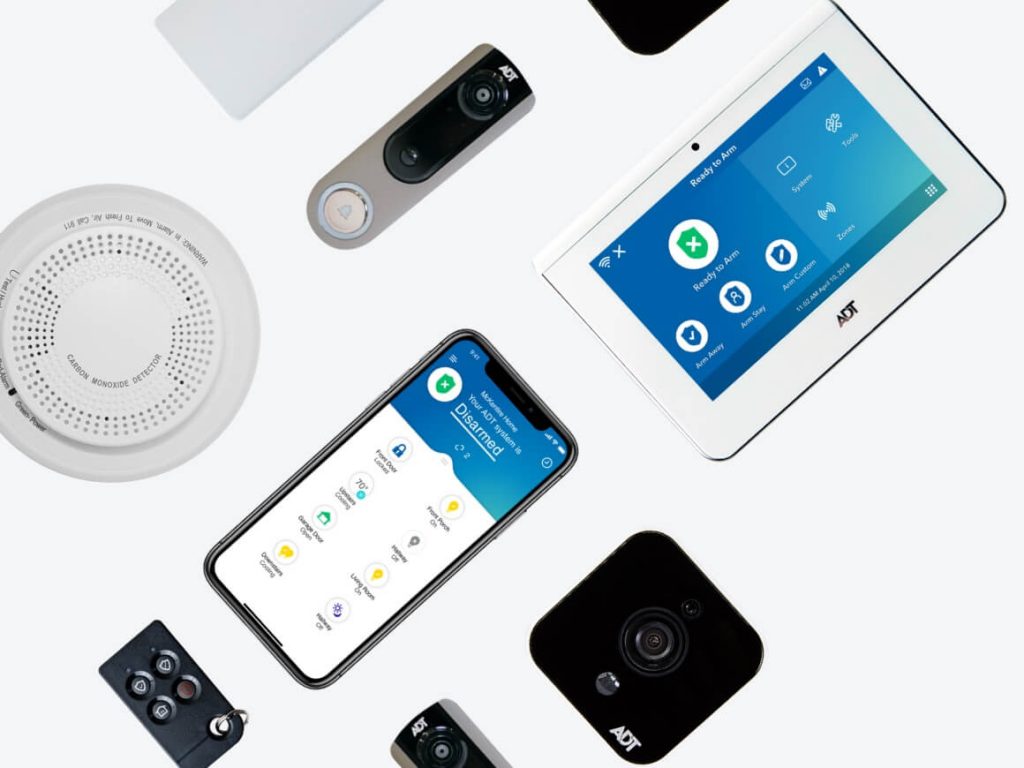 ADT
ADT
- Price: Varies, but tends to be on the expensive end. It also requires locking into a contract.
- Security Capabilities: Industry-leading response services. 24/7 basic and video monitoring available.
- Smart Office Capabilities: Large range of smart office capabilities available, including smart app and professional installation with other devices.
- Self-Monitoring? No
- Equipment? Wireless – Cellular. High Quality.
ADT is best for businesses that want the best security on the market. Given their reputation and experience, ADT is best for big offices with multiple employees to have optimum security and convenience.
Check here for current pricing on ADT.
Vivint
- Price: Varies, but on the expensive side. Around $50/month for monitoring.
- Security Capabilities: Secure 24/7 basic and video monitoring.
- Smart Office Capabilities: The industry leader in smart-office capabilities, including best in industry smart app, and professional integration with other devices.
- Self-Monitoring? No
- Equipment? Wireless – Cellular. Best in industry.
Vivint is the industry leader in smart office and smart home technology. For the business that wants a truly “smart office”, Vivint can’t be beat.
Check here for current pricing on VIVINT.
Frontpoint
- Price: Varies, but on the expensive end. However, cost savings are available compared to Vivint and ADT on installation and equipment.
- Security Capabilities: Secure, 24/7 video, and basic monitoring plans.
- Smart Office Capabilities: Large range of smart office capabilities, including mobile app.
- Self-Monitoring? No
- Equipment? Wireless – Cellular. High quality.
Frontpoint offers a lifetime guarantee on equipment, with no professional installation required. This makes it a competitor with ADT, as it provides very similar services at a lower cost. This system is ideal for medium to large businesses looking to buy good security for good value.
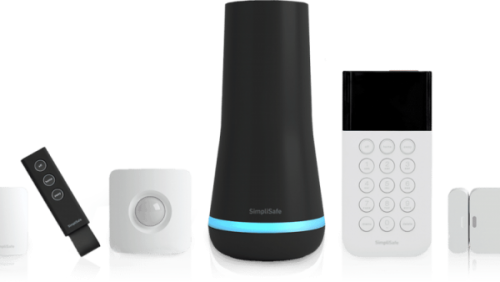 SimpliSafe
SimpliSafe
- Price: Low. Starts at under 300 dollars, monitoring starts at $15/month.
- Security Capabilities: Secure, 24/7 basic monitoring. Optional SimpliCams detect the unique heat signature of humans – no false alarms.
- Smart Office Capabilities: While there are some smart home integrations available, there is no smartphone app for remote access. Overall, limited smart-office capabilities.
- Self-Monitoring? No
- Equipment? Wireless – Cellular.
SimpliSafe is a good option for small businesses that want to save costs. Professional installation is available, but a DIY option is also available to save on installation. Cellular equipment and professional monitoring mean equipment is secure and does not require a phone line. Even though they provide monitoring, cellular SMS alerts can be set up to alert the business owner of changes detected.
Check here for current pricing on SimpliSafe.
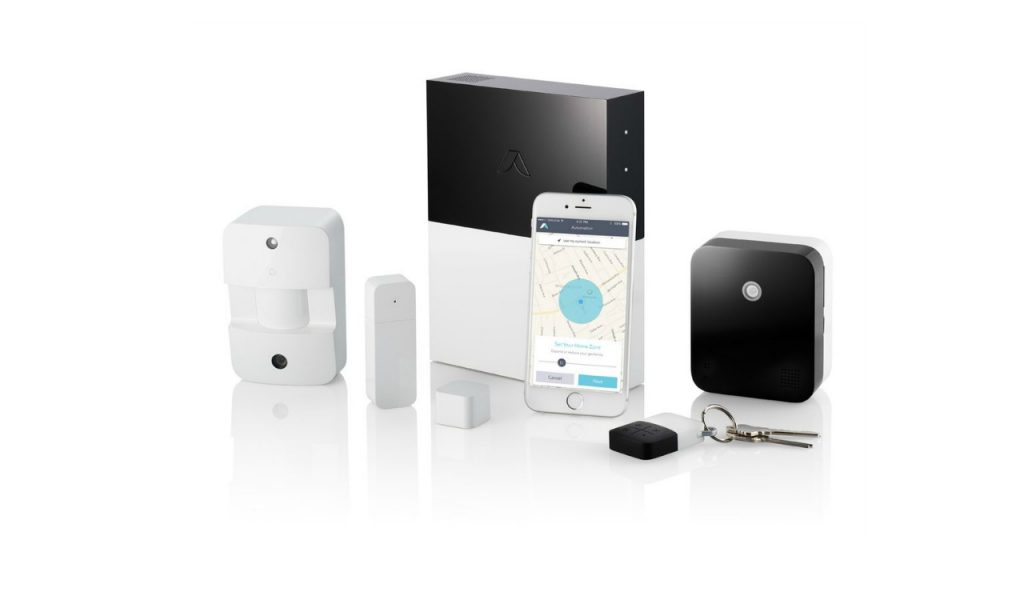 Abode
Abode
- Price: Low. Equipment is the main cost. Monitoring is between $0 – $10/month.
- Security Capabilities: Not very secure. Equipment is self-monitored on a WiFi network, making it vulnerable to hacking. Monitored option connects you to emergency services.
- Smart Office Capabilities: Equipment is compatible with many, many other devices. However, no smart office app, or installation is included.
- Self-Monitoring? Yes, but monitored is also available.
- Equipment? Wireless – WiFi
Abode is a budget option suitable for small offices or home offices.
Check here for current pricing on Abode.
Nest
- Price: Low monitoring fees, affordable equipment.
- Security Capabilities: 24/7 basic monitoring is available. However, equipment is on a WiFi network, making it vulnerable to hacking.
- Smart Office Capabilities: Large range of smart office capabilities, including mobile app. Powered by Google.
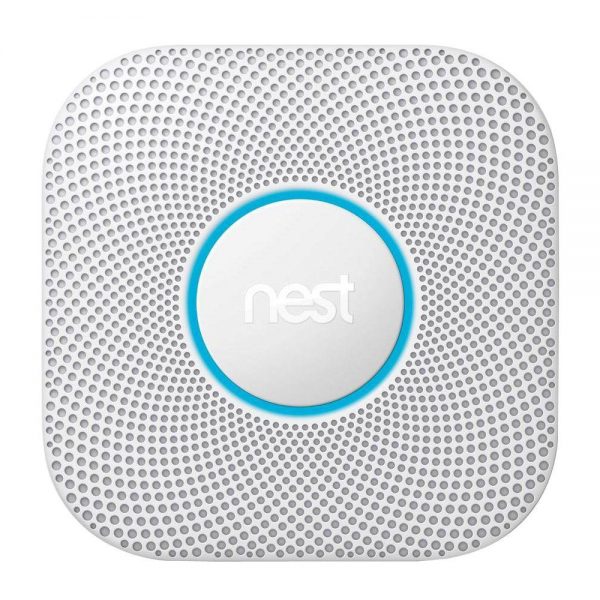 Self-Monitoring? Yes, monitoring is available from a partner company.
Self-Monitoring? Yes, monitoring is available from a partner company.- Equipment? Wireless – WiFi
Nest may be vulnerable to hacking because of the inherent security issues with a WiFi network. However, many homeowners and businesses give Nest good reviews. Use Nest to secure your business with caution.
Check here for current pricing on Nest.
BeSafe’s Building Safety Platform
At BeSafe, we take safety and security seriously. We help businesses to prepare themselves for the worst-case scenario, in case it ever does occur. Researching the best office security systems is only the beginning.
BeSafe has been helping hospitals, businesses, and schools improve security since 1999. Our building safety platform uses innovative technology to secure buildings, help get people to safety, and get the right information to the right people at the right time.
Find out how we can help you keep your employees safe.
Contact us today.
BeSafe Technologies Inc. is a participant in the Amazon Services LLC Associates Program, an affiliate advertising program designed to provide a means for sites to earn advertising fees by advertising and linking to Amazon.com.
